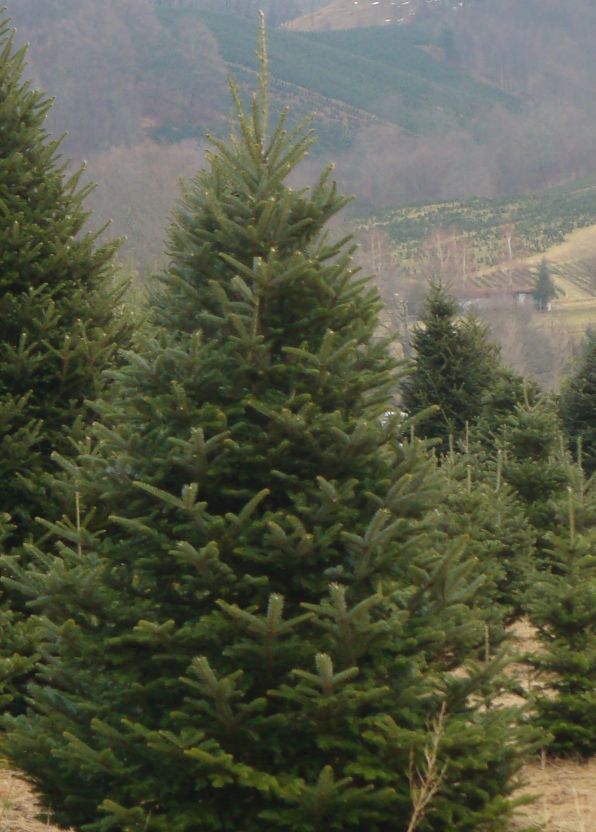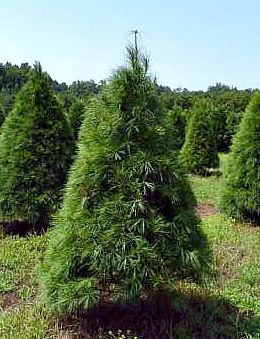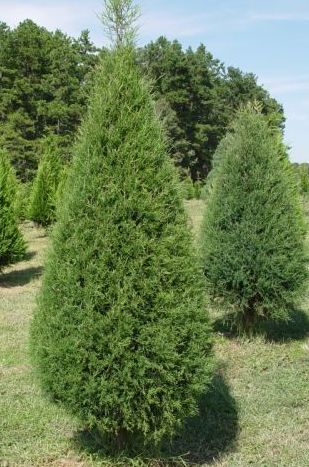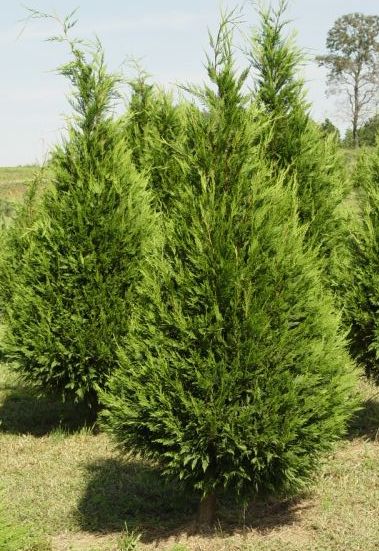Selecting the Right Tree
go.ncsu.edu/readext?289755
en Español / em Português
El inglés es el idioma de control de esta página. En la medida en que haya algún conflicto entre la traducción al inglés y la traducción, el inglés prevalece.
Al hacer clic en el enlace de traducción se activa un servicio de traducción gratuito para convertir la página al español. Al igual que con cualquier traducción por Internet, la conversión no es sensible al contexto y puede que no traduzca el texto en su significado original. NC State Extension no garantiza la exactitud del texto traducido. Por favor, tenga en cuenta que algunas aplicaciones y/o servicios pueden no funcionar como se espera cuando se traducen.
Português
Inglês é o idioma de controle desta página. Na medida que haja algum conflito entre o texto original em Inglês e a tradução, o Inglês prevalece.
Ao clicar no link de tradução, um serviço gratuito de tradução será ativado para converter a página para o Português. Como em qualquer tradução pela internet, a conversão não é sensivel ao contexto e pode não ocorrer a tradução para o significado orginal. O serviço de Extensão da Carolina do Norte (NC State Extension) não garante a exatidão do texto traduzido. Por favor, observe que algumas funções ou serviços podem não funcionar como esperado após a tradução.
English
English is the controlling language of this page. To the extent there is any conflict between the English text and the translation, English controls.
Clicking on the translation link activates a free translation service to convert the page to Spanish. As with any Internet translation, the conversion is not context-sensitive and may not translate the text to its original meaning. NC State Extension does not guarantee the accuracy of the translated text. Please note that some applications and/or services may not function as expected when translated.
Collapse ▲Selecting the perfect Christmas tree for your home can be an enjoyable and rewarding experience for the entire family. Decorating and displaying a real Christmas tree is a tradition followed by generations of families. Christmas trees are grown in almost every county in North Carolina and Fraser firs from the NC mountains are shipped nationwide. While hardier than most flowers, fruits or vegetables, real Christmas trees are also perishable. For your Christmas tree to hold up through the holidays, it should be selected and cared for with freshness in mind. By following a few simple guidelines, the consumer can select trees which will meet their needs throughout the holiday season.
Deciding on Tree Size
Before setting out to buy a tree, determine where the tree will be displayed and measure the available space. Remember to take into account the height of the Christmas tree stand and any ornaments to be displayed on top of the tree when deciding the desired tree height. The most common mistake people make is buying a tree that is too large for the intended space. Also consider whether all sides will be seen. For example, inexpensive trees have two good adjacent sides that present well from the corner of a room. If the tree will be seen from all sides a premium-grade tree may be more desirable.
Cut Tree or Living Tree?
The most common Christmas tree used is a cut tree. However, some prefer using a living Christmas tree sold with roots intact so that replanting is possible after the holiday season. Once established in your landscape, that Christmas tree becomes a reminder of that special year it was displayed. If you choose to buy a living tree, make sure that the species selected will live in your climate. Also be aware that it will take special care including regular watering, reduced room temperature, and a shorter display period in a heated home to survive until it is transplanted. Additional information about buying and caring for a balled and burlapped tree is available at: Selection and Care of Living Christmas Trees.
Where to Purchase a Real Tree
You might also have a choice of numerous places to buy a real tree. These include choose & cut farms, grower-operated, civic, and charitable retail lots, or retail stores and garden centers. Selecting a fresh-cut tree on a local farm provides a unique experience and tradition for many families, but retail lots often provide closer proximity, greater convenience, and a wider selection of tree species. Good quality, fresh trees can be found in any venue . For more information on where to go to find your real tree see: Where to Buy Your Real Christmas Tree.
Types of Christmas Trees in North Carolina
In North Carolina, there are a number of farm-grown trees available for purchase, including Fraser fir, white pine, Virginia pine, red cedar, Leyland cypress and others. Christmas tree characteristics such as foliage density, color, and fragrance that vary from species to species might also be important as you plan your holiday decorating.
Fraser Fir
Fraser fir, native to the highest elevations of North Carolina and named for plant explorer, John Fraser, has been called the Cadillac of Christmas trees for a good reason. Fraser fir has all the qualities of an excellent Christmas tree including strong branches, soft foliage, a pleasant fragrance, excellent needle retention, and an ability to stay fresh throughout the holiday season. Its branching structure provides both the strength and space for large ornaments. Foliage color is generally a lustrous dark green. Fraser fir represents over 96% of trees grown in North Carolina.
White Pine
White pine is a softer-textured tree with more pliable limbs than those of Fraser fir. At nearly three inches, its green and white needles, grouped in bundles of five, are longer than those of most other Christmas tree species. Most white pines have dense branching to give them a full conical shape. White pine foliage exhibits good needle retention in its many uses as either trees, wreaths, roping, or other greenery.
Virginia Pine
Virginia pine is often sold from choose & cut farms and has a rich piney fragrance, good needle retention when displayed in water, and stout branches to support heavier ornaments. Virginia pine’s twisted needles occur in pairs and are about 2 inches in length. It has stronger branches and stiffer needles than white pine.
Eastern Red Cedar
Many people prefer red cedar because it was the traditional southern Christmas tree they grew up with. Red cedar has small needles or scales that produce sprays of foliage rather than distinct branches with rows of needles. Its flexible limbs will not support many or very heavy ornaments but decorations of ribbons, dried flowers, or other lighter ornaments brings out the beauty of the foliage. Red cedar has a nice fragrance. It may dry rapidly in a warm house if not well-watered. If cut fresh from a choose & cut farm, it can be properly cared for, watered regularly, and hold up throughout the holidays
Leyland Cypress
Leyland cypress is a relative newcomer in the Christmas tree market. As with red cedar, its foliage is made up of fans or sprays of small, scaled needles on soft flexible limbs. Its upright branches have a feathery appearance which also do not support heavy ornaments. It has a brighter green color than red cedar. Leyland cypress has a very attractive shape and full branching overall. Like redcedar, Leyland cypress dries rapidly in a warm house if not regularly watered.
Arizona Cypress
Arizona Cypress is another Christmas tree grown on many choose & cut farms in the Piedmont and Coastal Plain of North Carolina. It has silvery-green to grey-blue foliage and upright branches. Immature foliage is needle-like. Mature leaves are scale-like, closely overlapping each other and encircling the stem. Some people describe the odor as citrusy or minty. As with other cypresses and cedars, Arizona Cypress and its cultivars are subject to rapid drying. Two varieties commonly grown as Christmas trees are Carolina Sapphire and Blue Ice, both of which have a whitish-blue color to the foliage.
Written by Jeff Owen, November, 2011






